All products featured are independently chosen by us. However, SoundGuys may receive a commission on orders placed through its retail links. See our ethics statement.
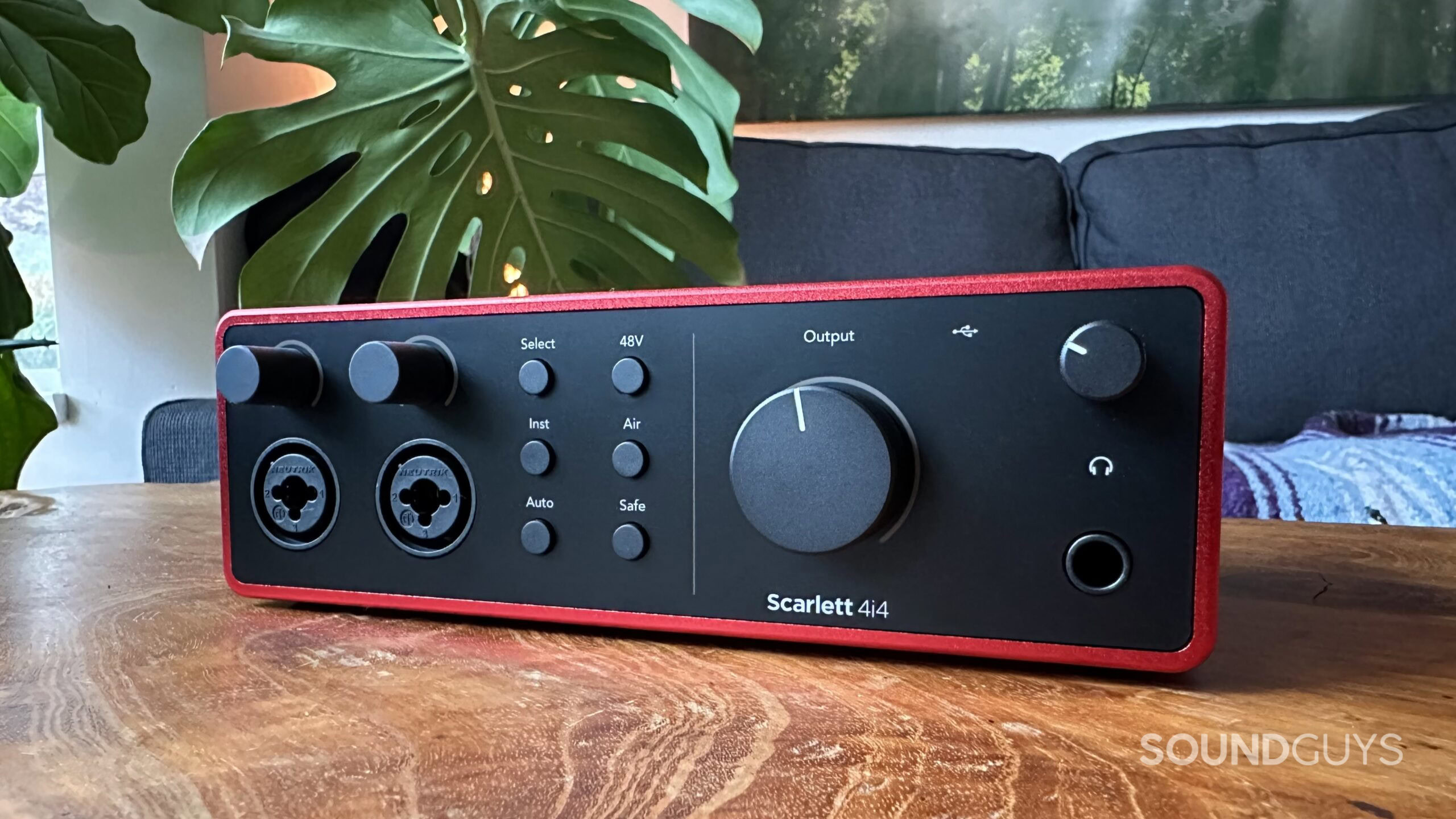

Focusrite Scarlett 4i4 (4th Gen) review
Published onOctober 31, 2024


Focusrite Scarlett 4i4 (4th Gen)
Music makers of all kinds have been relying on Focusrite products for years. While basic audio interfaces like the Scarlett Solo (4th Gen) have their place with singer-songwriters, you’re limited to only two inputs. Enter the Focusrite Scarlett 4i4 (4th Gen). Offering multiple connection options, including MIDI, is the 4i4 (4th Gen) the ideal music-making hub? Let’s fire this one up, hit record, and see how it sounds in this Focusrite Scarlett 4i4 (4th Gen) review.
Editor’s note: this is the first version of the article. Updates will follow as the market changes.
What I like about the Focusrite Scarlett 4i4 (4th Gen)
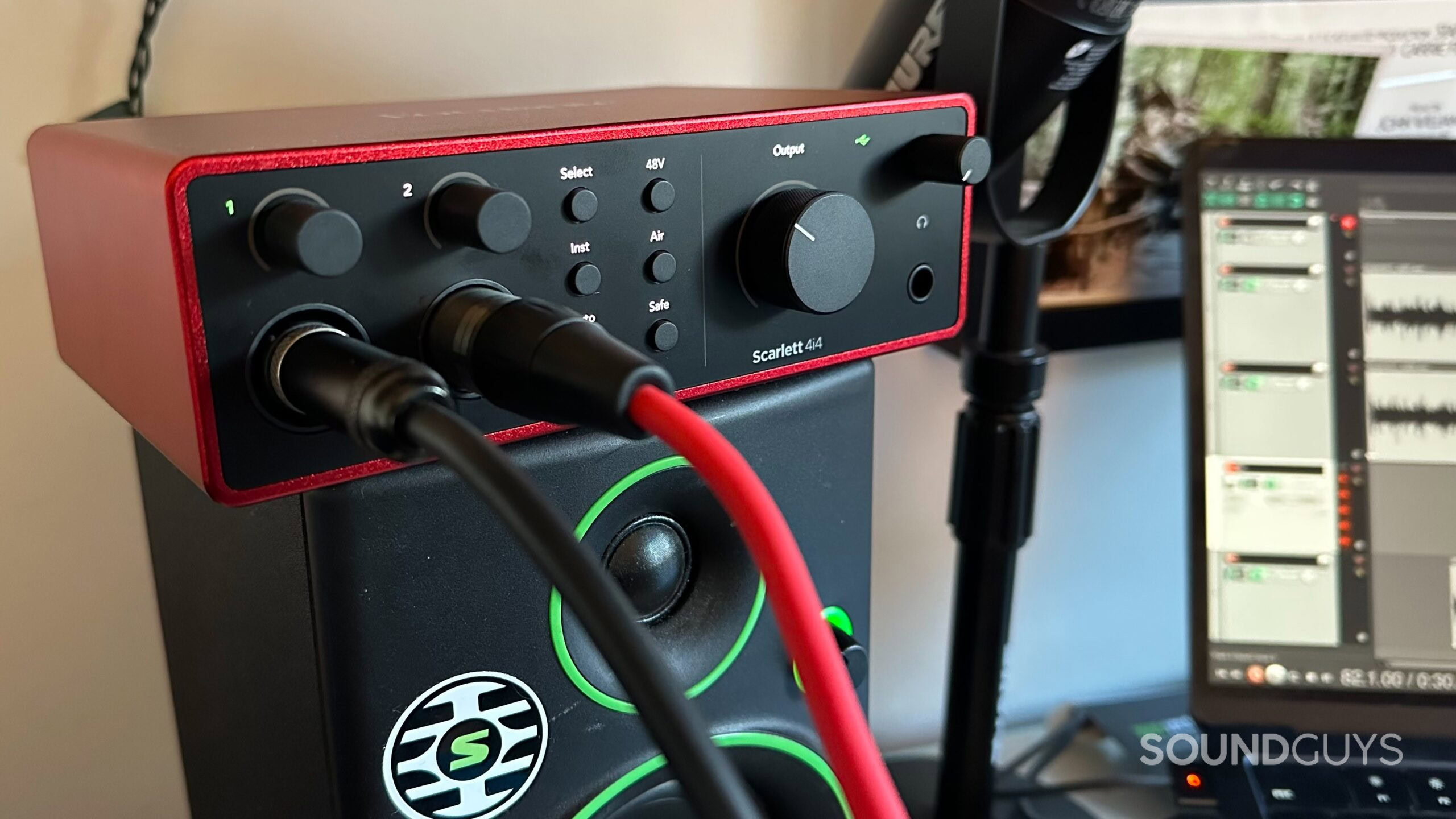
As expected, the Focsurite Scarlett 4i4 (4th Gen) audio interface is housed in its signature, durable red aluminum chassis. The front of the unit contains two of the four available inputs in the form of dual balanced XLR-1/4″ input jacks, allowing you to use either type of connection. Offering 69dB of gain each, you shouldn’t have any issues getting a suitable recording level no matter what microphone you’re using. You’ll also find a few selectable features like Auto Gain, which Focusrite claims will automatically adjust your gain levels to a suitable recording level, and Clip Safe mode, which will prevent your signal from getting into the red and distorting. Lastly, you have your output and headphone knobs to control the volume of both your monitors or headphones independently.
On the back of the unit, you’ll find more connection options. You can power the Scarlett 4i4 (4th Gen) from your computer via USB-C to USB-C; however, if you’re low on ports, Focusrite also supplies an AC to USB-C adaptor. Here, you’ll also find two more Hi-Z, 1/4″ instrument inputs and Midi In and Out ports. You’re also provided with four 1/4″ line outputs, a handy feature if you’re keen on referencing your mix through multiple monitors. Once you’re connected to your computer, fire up your favorite DAW, and you’re ready to start making music.
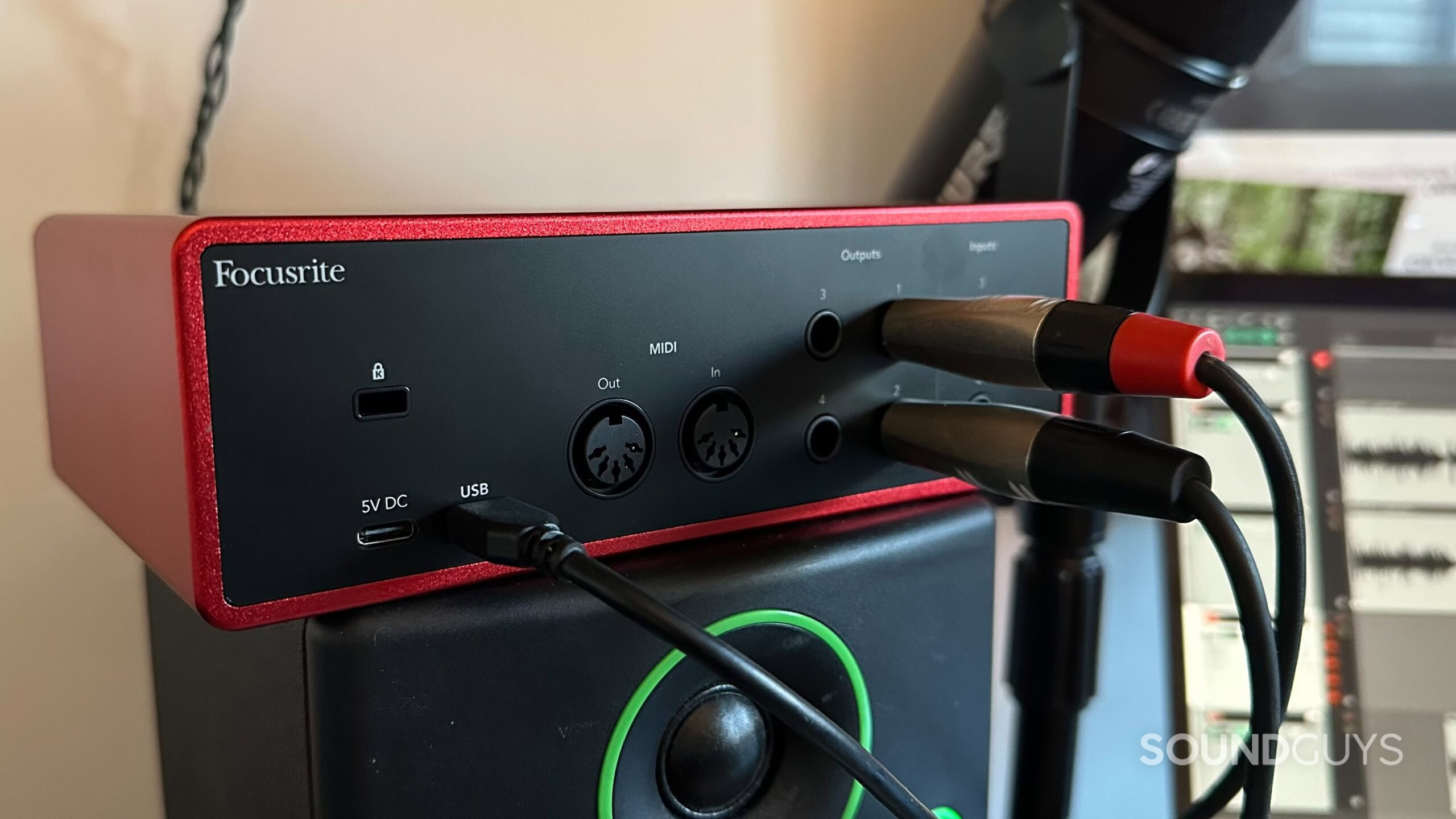
I recorded some demos with the Focusrite Scarlett 4i4 (4th Gen) and my MacBook Air in my small home office, which you can hear below. The room has no acoustic sound treatment of any kind. Reaper is my DAW of choice.
Focusrite Scarlett 4i4 (4th Gen) Acoustic Guitar Demo:
This is a recording of my trusty, smaller-sized, $400 Yamaha FS830 acoustic guitar. I used the Focusrite CM25 MKIII condenser microphone connected to the 4i4 via XLR, aimed at the 12th fret of the guitar. I recorded three tracks in total: two rhythm tracks panned hard left and right and a “lead” track directly down the middle. The rhythm tracks have no additional processing, but I added some basic reverb from my DAW for some tonal texture.
Focusrite Scarlett 4i4 (4th Gen) Electric Guitar Demo:
As mentioned, Inputs 1 and 2 offer dual XLR-1/4″ jack that doubles as a high headroom, Hi-Z instrument input, which is ideal for recording electric guitars with your favorite amp simulator. Simply plug in your 1/4″ cable and press the “Inst” button. You don’t need a DI or additional gear to get a usable signal. For this demo, I recorded two tracks of clean guitars and a distorted lead track with some delay and reverb down the middle. All tones are courtesy of the Neural Archetype Gojira X amp simulator plug-in and my PRS CE 24 electric guitar. I noticed the guitar tones responded well to my playing in real-time, as if I was playing through a traditional guitar amp.
Focusrite Scarlett 4i4 (4th Gen) Singing (No Air Mode):
While I’m no singer, one feature you’ll find on most Scarlett interfaces is “Air Mode.” Focusrite claims it will magically enhance the sound of your voice. For reference, here’s a quick Johnny Cash line without Air Mode engaged. For this demo, I’m singing into a Shure MV7+ dynamic microphone connected via XLR.
Focusrite Scarlett 4i4 (4th Gen) Singing (w/ Air Mode):
This is the same line using the same microphone with “Air Mode” engaged. It’s subtle, but there is an increase in the high frequencies of my voice. Air Mode is almost always worth a try, depending on the type of sound you’re going for. That said, similar results could be achieved with an EQ plug-in, but getting the same results with the push of a button is much easier.
Focusrite Scarlett 4i4 (4th Gen) Speaking Voice (w/ Air Mode):
Lastly, my regular speaking voice. I left Air Mode on for this one, and it’s just me talking into the same Shure MV7+ dynamic microphone, a popular and affordable choice for podcasters and streamers. No issues here.
What I don’t like about the Focusrite Scarlett 4i4 (4th Gen)
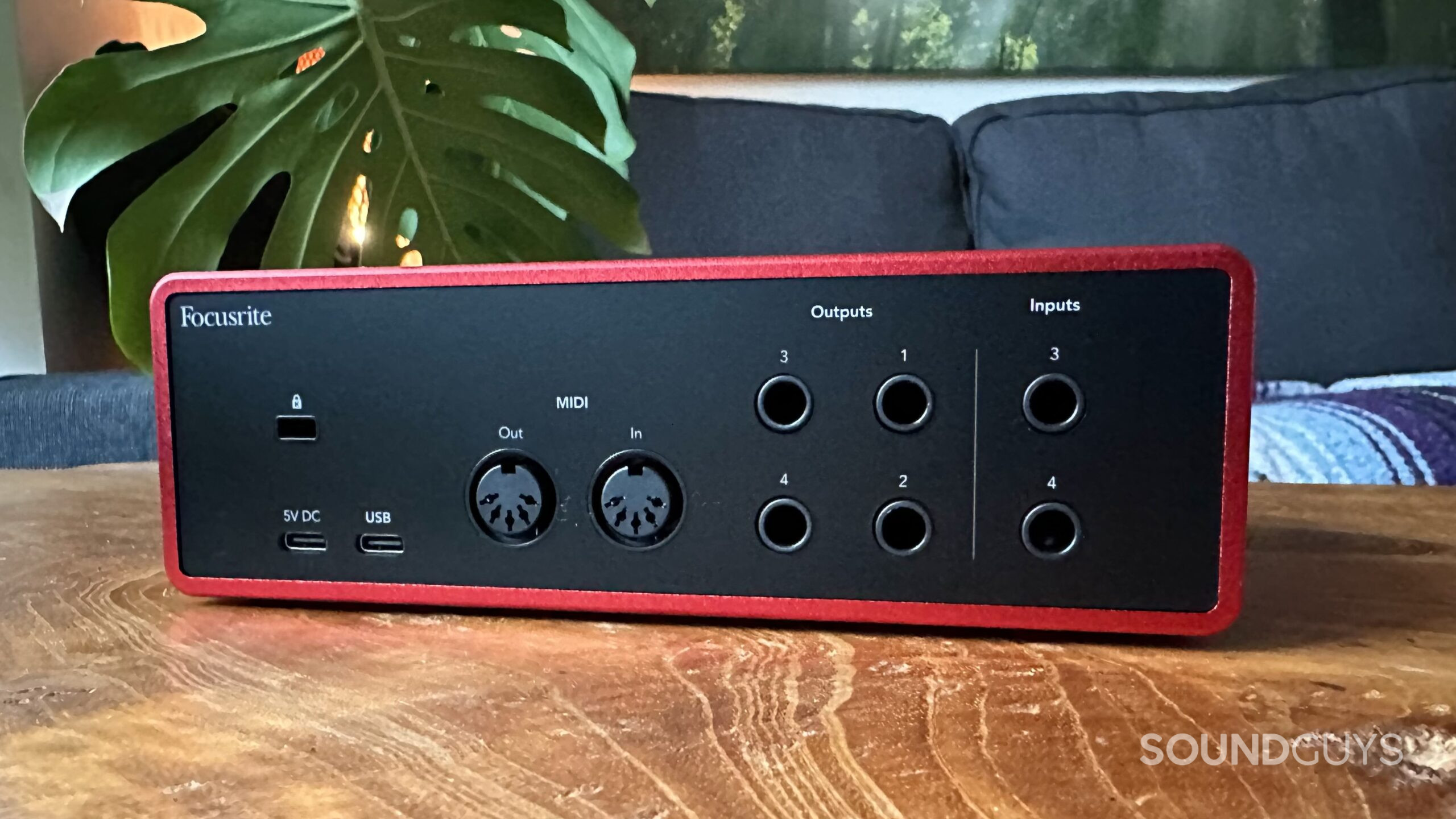
I don’t have many gripes with the Focusrite Scarlett 4i4, although I didn’t have much luck with the “Auto Gain” setting. Pressing the “Auto” button and playing or singing for ten seconds will supposedly set the perfect level for you. Anytime I tried to use it, I didn’t end up with the gain levels I usually like to see; they were pretty weak. I ended up setting them manually for a healthy signal, which is good practice anyway. That said, “Clip Safe” mode worked quite well and prevented anything I could throw at it from clipping.
Since the 4i4 (4th Gen) offers four line-outs, I would love a built-in switch to select between said outputs. For example, it would allow you to have outputs 1 and 2 connected to one set of monitors and then outputs 3 and 4 connected to a different set of monitors for reference. A selectable switch would make it easy and convenient to A/B each pair as you please.
Should you buy the Focusrite Scarlett 4i4 (4th Gen)?
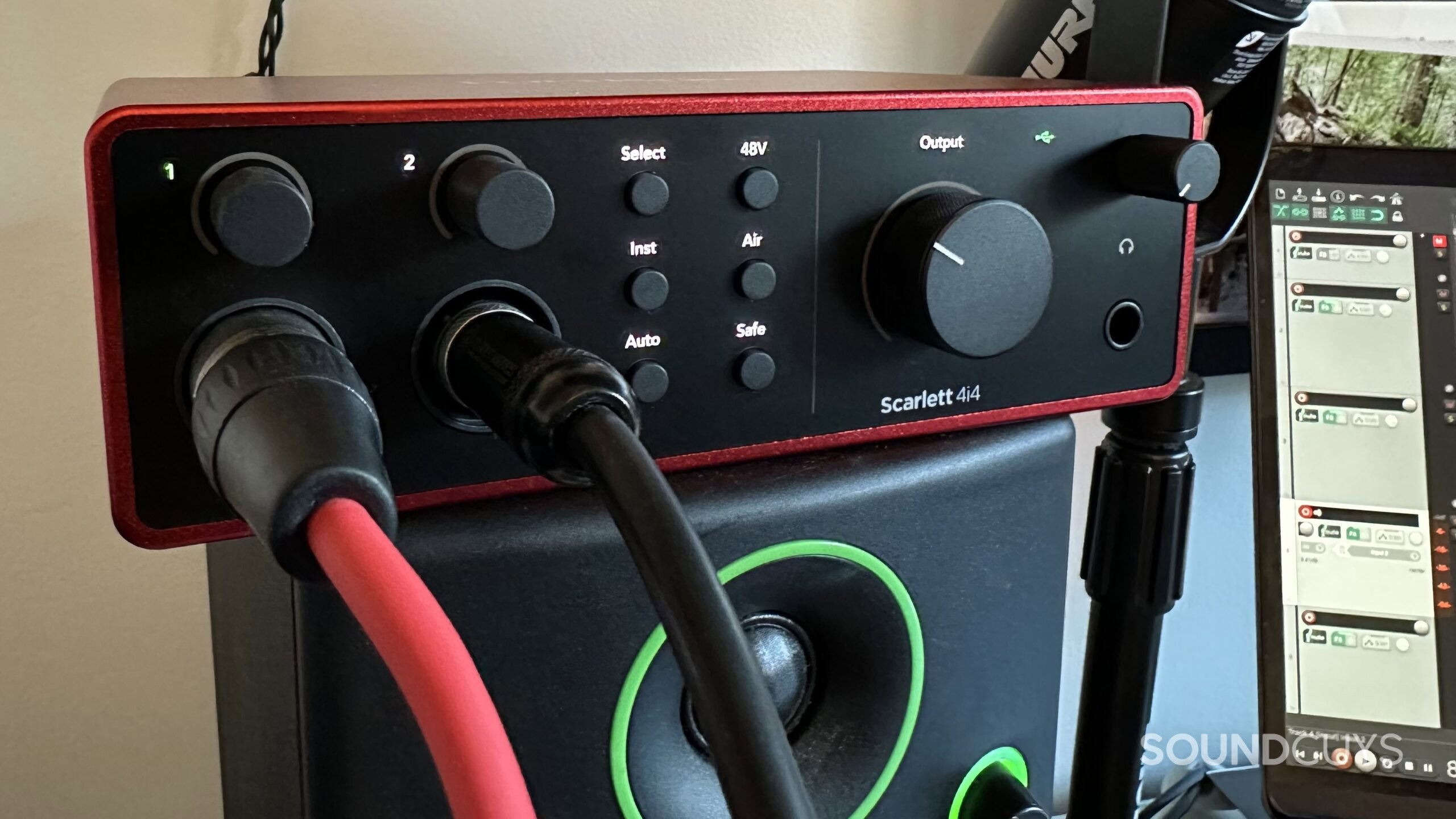
It’s a bit more of an investment, but if you’re into making music for the long haul, the Focusrite Scarlett 4i4 (4th Gen) audio interface is an ideal choice for any intermediate producer, audio engineer, musician, or anyone who simply doesn’t want to be limited to only a single pair of inputs.
With multiple input options, the 4i4 will allow you to simultaneously record up to four instruments, synthesizers, or even outboard gear. With multiple outs, the 4i4 will allow you to connect up to four reference monitors, enabling you to A/B your mix over various mediums. Lastly, its MIDI capability can help control, connect, and communicate with instruments like MIDI keyboards or digital drum kits. With no shortage of connection options, not to mention handy features like Clip Safe and Air Mode, the Scarlett 4i4 (4th Gen) is ready to take on your next recording project.

Frequently Asked Questions:
The Scarlett 4i4 comes with the “Hitmaker Bundle”, which consists of Ableton Live Lite, three months of Pro Tools Artist, or six months of FL Studio Producer Edition. It also includes various plug-ins from Antares, Softube, Landr, and XLN Audio.
The main difference between the 4i4 and the 2i2 is the number of inputs and outputs. The 4i4 offers four inputs and four outputs, the 2i2 offers only two inputs and two outputs. The 4i4 also offers MIDI in and out.
While the Scarlett 4i4 (4th Gen) comes with a USB-C cable for power, you will still need a 1/4″ cables for connecting instruments and your monitors, along with XLR cables to use with any microphones.
Yes, the Scarlett 4i4 (4th Gen) offers 48V of phantom power with the push of a button.
Yes, the Scarlett 4i4 (4th Gen) offers MIDI in and out.
Yes. The Scarlett 4i4 (4th Gen) is an audio interface that features four built-in, high-detail, ultra-low-noise preamps.
The Scarlett 4i4 (4th Gen) requires 5V @ 1.5A to function properly.